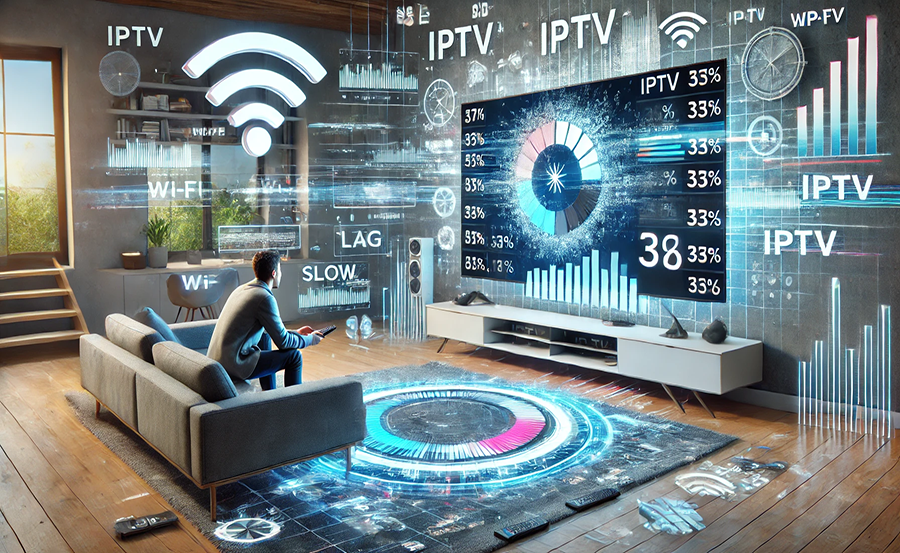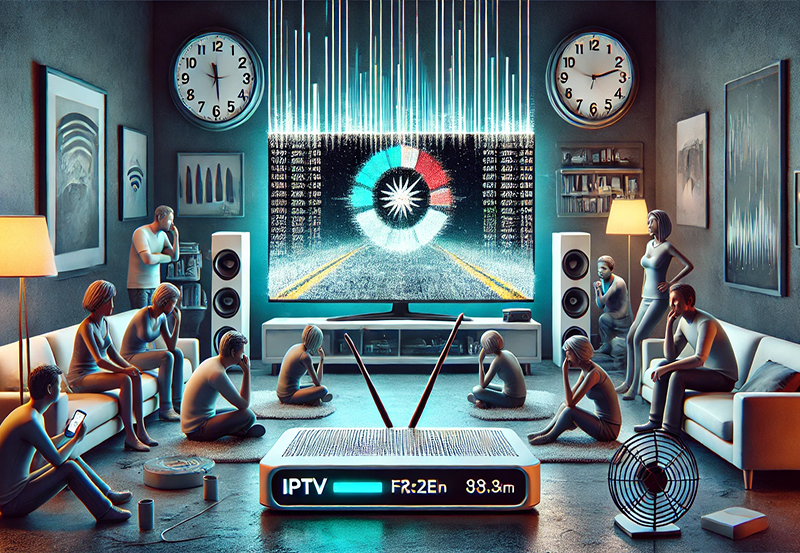In today’s fast-paced digital world, where streaming content forms a significant part of our daily entertainment, the demand for high-quality IPTV (Internet Protocol Television) services has skyrocketed. With the proliferation of IPTV providers and enticing best IPTV deals, unlocking the ultimate IPTV experience is something both businesses and consumers actively seek. However, one critical aspect that can make or break this experience is latency. Latency in IPTV streaming can lead to frustrating delays, buffering issues, and poor viewing experiences, ultimately affecting user satisfaction and retention.
This article aims to offer practical insights and actionable strategies to minimize latency, ensuring viewers get the seamless and high-quality streaming experience they deserve. From understanding the technicalities to leveraging modern solutions, let us explore the top tips to significantly reduce latency in IPTV streaming.
Understanding IPTV and Latency
Before diving into methods to reduce latency, it’s vital to grasp the basics of what IPTV is and how latency plays a role in affecting streaming quality. IPTV is a system where television services are delivered using the Internet protocol suite over a packet-switched network like a LAN or the Internet, unlike traditional terrestrial, satellite, and cable television formats.
The Basics of IPTV
IPTV doesn’t broadcast content using cable or satellite; rather, it relies on a broadband connection to stream media in real-time. This method offers flexible and personalized viewing experiences, enabling viewers to select what they wish to watch, when they want to watch it. The ability to provide live TV, time-shifted media, and video-on-demand makes IPTV a versatile choice. wants Buy 1 Year IPTV subscruption
Challenges in IPTV Streaming
However, streaming large volumes of high-definition content can exert pressure on network infrastructure. One of the standout challenges here is latency, which is the delay between a user request and the action’s completion, like changing a channel or pausing a show. High latency can cause buffering, disrupting the viewing experience significantly.
Key Strategies to Reduce Latency in IPTV Streaming
Reducing latency requires a multifaceted approach, combining both technical enhancement and user-oriented strategies. Here we detail some of the critical strategies to ensure a smoother transmission of IPTV content.
Upgrade Your Network Infrastructure
One of the primary steps in reducing latency is upgrading the network infrastructure. This involves improving bandwidth, employing advanced networking hardware, and optimizing server locations to enhance data transfer speeds.
Bandwidth Improvement
- Consider increasing your ISP plan to accommodate higher data throughput.
- Employ dual-band routers for better signal management and reduced interference.
Additionally, ensuring consistent connection quality with modern fiber-optic technology can significantly diminish latency issues.
Content Delivery Network (CDN)
Utilizing a Content Delivery Network can play a crucial role in minimizing latency. CDNs distribute the service delivery through geographically dispersed servers, reducing the distance data must travel and thus the time required for delivery.
Benefits of Using a CDN
- Enhanced streaming speeds by caching content closer to end users.
- Improved reliability and load balancing, which accommodate high demand.
Optimize Video Compression
Another effective method to reduce latency is optimizing video compression technologies. Proper compression balances quality and file size, facilitating quicker data transfer without decreasing performance.
Advanced Compression Techniques
Use state-of-the-art codecs such as H.265 (HEVC) that offer better compression rates compared to older formats like H.264. Customizing bitrate settings based on the viewers’ bandwidth can also reduce latency effectively.
Investing in Scalable Infrastructure
Scalability is pivotal for handling increasing numbers of users simultaneously without compromising performance. Reducing latency involves creating an environment that adapts to growth dynamically.
Importance of Scalability
A scalable infrastructure ensures systems respond efficiently to increased demand. By adopting cloud solutions or hybrid models, IPTV providers can keep latency at bay by dynamically adjusting resources according to usage.
Load Balancing Techniques
Implement robust load balancing solutions that distribute the network traffic efficiently. By doing so, you reduce the likelihood of individual servers becoming overwhelmed, which can in turn minimize latency during peak times.
User-Centric Optimizations
Occasionally, achieving low latency is as much about technical enhancements as it is about smart user-oriented adjustments. By creating a user-centric model, providers can further streamline the streaming experience.
Adaptive Bitrate Streaming
This technology allows video quality adjustments based on the viewer’s internet speed in real-time, minimizing buffering while maintaining playback integrity.
Advantages of Adaptive Bitrate
- Reduces buffering by adjusting video quality on the fly based on network conditions.
- Enhances user satisfaction by providing a more consistent viewing experience.
Regular User Feedback
Encouraging feedback from users regarding streaming issues can provide valuable insights for future improvements, directly influencing latency reduction strategies.
- Gather user data on streaming quality, interruptions, and buffering frequency.
- Use this data to refine network settings and improve overall performance.
Emerging Technologies and Future Considerations
As technology evolves, so do the solutions for dealing with latency. Staying ahead of technological trends is crucial for maintaining a competitive edge in the IPTV sector.
Integrating Artificial Intelligence
AI can be leveraged to predict user behavior patterns and optimize content delivery for reduced latency. By analyzing vast data sets, AI algorithms can enhance the decision-making process, leading to smarter, faster streaming solutions.
5G Networks and Beyond
The rollout of 5G networks holds immense promise in resolving latency issues, providing higher data rates and lower latency compared to existing LTE networks. As 5G becomes more accessible, it could be a game-changer for IPTV streaming quality.
Closing Thoughts
Striving for low latency in IPTV streaming isn’t just about overcoming technical barriers; it’s about elevating the overall viewing experience. By implementing thoughtful strategies—ranging from infrastructure enhancements to user-centric solutions—one can significantly impact the quality of IPTV services offered. As technology advances, embracing these changes proactively will not only reduce latency but also unlock the ultimate IPTV experience for viewers and providers alike.
Frequently Asked Questions

How do IPTV providers typically handle latency issues?
IPTV providers often implement various network optimizations, including CDN usage, advanced compression techniques, and adopting scalable cloud solutions, to manage and minimize latency effectively.
What is the significance of using adaptive bitrate streaming in IPTV?
Adaptive bitrate streaming is significant because it dynamically adjusts video quality based on the viewer’s current internet speed, reducing buffering and maintaining uninterrupted service delivery, thus enhancing user satisfaction.
Can upgrading to a 5G network improve my IPTV streaming experience?
Yes, upgrading to a 5G network can significantly improve IPTV streaming by providing faster data transfer speeds and lower latency compared to 4G LTE, resulting in a smoother and more reliable viewing experience.
Is content delivery network (CDN) usage mandatory for reducing latency?
While not mandatory, using a CDN is highly beneficial for reducing latency. CDN’s distributed server infrastructure brings content closer to the user, thus decreasing transmission time and improving streaming performance.
What role does video compression play in minimizing latency?
Video compression reduces the file size of media content, which speeds up data transfer over the network. Using efficient codecs and customizing bitrates can significantly reduce latency while maintaining video quality.
Are there emerging technologies that could further reduce IPTV latency soon?
Yes, innovations like AI and the proliferation of 5G technology offer promising solutions for further reducing latency, by optimizing data transmission and improving network efficiency for more seamless IPTV experiences.
How can user feedback aid in reducing latency for IPTV services?
User feedback on streaming quality and issues can provide actionable insights that help providers adjust settings and configurations, leading to improved service reliability and reduced latency in the future.
Best Linux IPTV Player Showdown: Kodi vs The Rest




